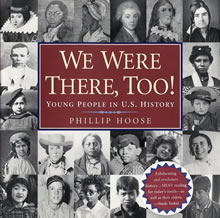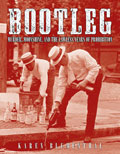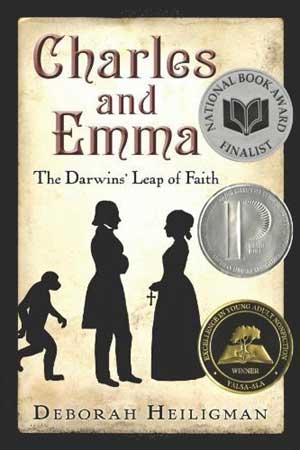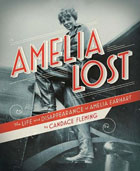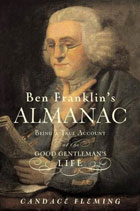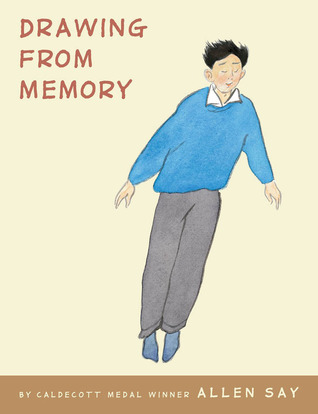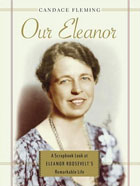Introduction
To those who keep abreast of the developments in non-fiction today, it comes as no surprise that it deserves to be highlighted in every library environment. Long gone are the days were all non-fiction was considered dry, stuffy and dull. Non-fiction, or informational text, has become much more that a car manual, or information on how the water cycle works. New methodologies and needs have led to innovations in tone, format, layout, topics, development, continued research, hands-on activities and new common core standards for education is now driving those innovations even further, as a good portion of those standards center on viable, interesting, level appropriate, wide bases of non-fiction, that cross all culture boundaries, to ensure the success of our children inside, and outside, of school.
There is not one aspect of the library that non-fiction does not, and has not affected. Let’s highlight a few ways in which, informational text has an effect, in public libraries, but particularly on young adults, and how it can be utilized to improve and expand current offerings and processes, within the library and community environments.
Non-fiction on Collection Development
Common Core Standards tell us, “Students need to become strong writers, and do to that, they need expert instruction, time to write, and meaningful opportunities for writing a wide range of informational, argumentative and narrative texts. They also must become proficient readers of more complex texts, and that means they need expert instruction and opportunities to read a wide range and very deep volume of texts” (Calkins, L., Ehrenworth, M., & Lehman, C, p.18). This means that continual collection development, particularly of long neglected non-fiction sections, is essential to provide the base necessary for patrons, in particular children, to succeed in a 21st century world. This means incorporating multiple formats, increasing methods of accessibility, potentially utilizing interlibrary loans, and finding ways to maximize budgets to meet this growing need for quality, interesting, level appropriate non-fiction, across all age groups. While this is obviously imperative in school libraries, which are turning away from traditional textbooks toward more tradebooks, to meet the need for increasing complexity and comprehension, this also needs to drive public libraries to re-evaluate their circulation statistics, performing S.W.O.T. analysis if necessary and definitely investing in non-fiction collection development where service gaps are obvious. Those gaps will definitely become apparent, particularly as many libraries spend more time focusing on fiction and entertainment collection development, given a perceived desire by the local community.
Re-establishing the necessity and importance of a good, varied, well written and interesting non-fiction section helps re-establish the relevancy of the library and increases the knowledge and appreciation of the genre through its patrons. Without library support, these informational texts go largely ignored, and thus, the community loses out on an invaluable resource, necessary for a world where survival means increased comprehension and information literacy development.
Non-fiction and Cataloguing
Non-fiction, where cataloging is concerned, has been constantly developing for decades. Now, with the frequent use of automated OPAC’s and standardized MARC records using the Library of Congress classification system (while other libraries may use a combination of Dewey Decimal, L.C. and home grown methods), non-fiction has become easier to identify and catalog using ALCTS accepted practices, with specific MARC record lines corresponding to intended audience, and even many call numbers including the same information, for ease of reference and identification, while the entries themselves are becoming standardized across the board, with the utilization of copy cataloging, saving both time and money for the cataloger. Non-fiction for children can be designated, after the location number and author name, with a E for picture books for the youngest children, J for Juvenile titles, Teen for teen rated, or young adult books (Fountain, J., 2014). These designations also allow libraries supreme autonomy over the physical location of these books, depending on their own requirements. For some libraries it may be possible to keep non-fiction titles grouped with fiction titles, in separate sections, by intended audience, whereas other libraries may choose to incorporate non-fiction titles of all age into one non-fiction section altogether. This ultimately maximizes flexibility and cost saving.
Non-fiction and Programming
Non-fiction provides a rich playground of opportunities for programming. There are endless subjects, which can be tied in to events, news stories, entertainment, and special occasions. Shark week on the Discovery Channel alone, for example, can inspire dozens of programming opportunities, such as a sea themed parade, puppet crafts, plays, displays, art contests, movie viewings, and more. These activities can span multiple age groups, providing cohesive programming across departments, while increasing community awareness, simultaneously informing the community about new topics, and generating buzz about fun new ways to interact with the library .This can easily lead into cost efficient publicity opportunities, with stories being sent to newspapers or television stations, posts and events created across social media, blog articles written, and suggestions for programming shared between information professionals, offering an additional increased opportunity for networking, and further reach and innovation.
Getting the entire library staff involved is beneficial. The more invested and interested employees, the better promoted and visible the programming will be, as excitement is easily conveyed. Coordinate subject weeks with local events, community and cultural celebrations and get schools involved, perhaps cross organizing in conjunction with curriculum units. This could provide additional publicity opportunities utilizing collaboration with local schools, if the originating institution is a public library, and can help drive Common Core Standard goals as well. Drawing the correlation between the book and real-life shows just how relevant the offerings of the library are, and how sensitive they are to the needs and backgrounds of those being served.
Non-fiction and Serving Diverse Populations
In order for a library to seem relevant to the demographic it serves, the demographic, or patrons, have to believe that it, and its collection, and programming, somehow applies to them, and their needs, whether cultural, economic, social, or otherwise. It is in this vein that non-fiction becomes absolutely essential. Providing newspapers in other language, folktales and cookbooks from other cultures, information on culturally based events and celebrations, scholarships, language, as well as informational text in various levels, including narrative non-fiction of those who have come from similar backgrounds, as well as familiar topics in unfamiliar languages for E.S.L. patrons (Hadaway, N.L., Vardell, S.M., &Young, T.A, 2002), all help to meet that need. It creates a connection, provides information uniquely tailored to the demographic, provides opportunity for language and literacy development and is particularly important with children and young adult patrons.
Young adults, in particular, are ego-centric, meaning that their world revolves around themselves and their place in the world at large. They need non-fiction that relates to their experiences, their thoughts, their changing attitudes and bodies, which helps them feel more connected to their communities, their families, their peers and environments, and also stimulates their minds and helps them become successful in the real world. They are bridging the gap between childhood and adulthood, and particularly for those sensitive topics they have difficulty discussing with others, non-fiction becomes a part of their identity and their method of coping and they need a wide variety of it. Through the stories and concepts presented in non-fiction, they are able to see their experience in a greater context, feel connected to their communities and find direction. In doing so, they are also passing these resources onto their family and friends, making suggestions for improvements and new inclusions, encouraging others to utilize the resources of the library, in the hopes it can do the same for them.
Non-fiction and Connecting with Library and Web-Based Reader Communities
When it comes to non-fiction with library and web-based reader communities, we are very lucky that we live in a technologically advanced world, where multiple formats of titles are becoming increasingly available. With the introduction of cloud environments, e-books, audio books, in additional to traditional print sources, librarians are better able to span all reading preferences, maximizing subscription costs but allowing higher circulation statistics as more people are looking for the same titles. It is easy to see how this might also be even more of an impact as many schools are attempting to make the shift from textbooks, to trade non-fiction books, to meet the Common Core standards that require increasing complexity based on level. Many of these schools are struggling to find a way to meet that need, particularly if classes need the materials at the same time. This is where having both electronic and physical access becomes essential, not only to allow greater access, but also a better comfort level in both school and public libraries.
There are some who find that libraries offer less distraction. Some find they provide more. Some want the security of having a teacher or librarian to go to for questions, and others prefer to be able to access the text from home, where they can talk to their families. Others will need assistance finding related titles for further research. The difficulty comes in that publishers and trade partners often see a great desire for fiction only in multiple formats and it’s time that view was changed, as the face and importance of non-fiction is also changing. Overall, it is important to include non-fiction titles that span the demographic and specific needs of the library patrons, while taking into consideration their format needs as well. This, again, is tied with collection development, and ensures that little to no service gap is experienced, while offering high interest titles, bridging all parts of the collection.
Non-fiction and Webpage Development
Besides the fact that traditional non-fiction can tell you how to build a webpage, how to develop and maintain it, the genre itself lends immeasurably to the content of the library webpage, offering opportunities for highlighting titles, publicizing offerings and events, in the light of related programming, highlighting relevant Common Core Standards, and presents opportunities for further learning, particularly when they are and incorporated into lesson plans and Virtual Learning Commons. This type of information sharing allows multi-media to become indispensable for creating interest and relevancy. Librarians can post non-fiction related videos, music, games, apps, as well as web resources for further exploration. They can encourage research, suggest topics, relay phenomenal amounts of information in new and exciting ways, particularly for reluctant readers who may still have their doubts about non-fiction titles.
There is no better way, to gain interest in a genre that was once considered difficult and antiquated, than by using new technology to make it seem interesting and fresh. Whether that occurs by utilizing programs like Animoto for book trailers, YouTube for book talks, skits and non-fiction storytimes, or as galleries for non-fiction related hands-on activities, the media lends so much visibility and life that non-fiction itself takes on a whole new meaning. It can constantly be refreshed to be updated with library themes and programming, providing emotional and cultural connections, eliciting excitement in exploration of new ideas with patrons, while generating interest in new methodologies of non-fiction writing, while simultaneously providing low cost options for publicity, and connection.
Non-fiction and Publicity
At the heart of library publicity is trending. What is hot? What is new? What is going to grab a patron’s interest and bring them in the door? For example, right now, there is a huge emphasis on narrative non-fiction. Compared to previous biographies that most library professionals are used to, this new sub-genre may give facts, like so many before them, but more importantly it tells a story, it vibrates with “emotional resonance” (Sundberg, I., 2010). This alone is enough to revolutionize non-fiction and highlight its relevancy, particularly with teen and young adult audiences whose development often dictates that they are looking for stories to which they can relate to, that are make them say “that’s just like me” (Aronson, M., 2012) and while that did not used to be the case with non-fiction, the narrative makes all the difference, as the writer finds its voice. Empathy and sympathy are the keys to getting the patron emotionally invested in the medium and the genre. That is part of the reason why this genre is so popular now, and why, if a library includes such works in their collection, and highlights them, whether by display, website, blog, book groups, readers advisories, or other forms of social media, it becomes a double win, as not only is it shows the forward thinking of the library, the concern for the emotional and developmental well-being of its patrons, its interest in history, and its ability to keep its finger on hot button topics, reversing the idea that the library itself is a dusty repository of information.
Keep it fresh! Have a bookmark, art or fan-fiction contest, based off of a narrative non-fiction book, or use resources, including multi-media, on current local topics, for example, in the Pacific Northwest, the Oso landslide, which killed dozens of people, and has inspired many charitable organizations, events and ways to get involved. Young adults, in particular, are keen to share their opinions and solutions, if only someone is willing to listen, and using these non-fiction resources, recent publicity regarding similar topics, while creating added publicity for related programming, are an excellent way to allow them a voice, while causing people to re-determine their views on non-fiction, the issue at hand, and the library reputation itself. By bringing attention to hot non-fiction topics that are already trending, the library itself also saves valuable budget dollars, instead being able to utilize, repost, and direct patrons to existing public awareness, increasing interest and heightening relevancy. To ignore , non-fiction and the attention it has already generated, would definitely be foolhardy, particularly given its increased use in newly developed Common Core Standards, which are driving both public and school libraries.
Non-fiction and Common Core Standards
Whether we like or hate the revised Common Core Standards, as educators, parents and librarians, they are very real, with far reaching implications and are here to stay. “Reading anchor 10, which asks readers to ‘read and comprehend complex literary and informational texts independently and proficiently’ (2010a, 10)” (Calkins, L., Ehrenworth, M., Lehman, C., p.32), in increasing complexity, while knowing the difference between literal and figurative information, shows in no uncertain terms in the importance of non-fiction in Common Core Standards, and the basic overall learning expectations for each grade level. The C.C. (Common Core) goes on to state, “To be ready for college, workforce training, and life in a technological society, students need the ability to gather, comprehend, evaluate, synthesize, and report on information and ideas, to conduct original research in order to answer questions or solve problems, and to analyze and create a high volume and extensive range of print and non-print texts in media forms old and new. (4)” (Calkins, L., Ehrenworth, M., Lehman, C., p.75). As such, these new standards are driving the way libraries and school media centers approach non-fiction, as they attempt to help teachers and educators meet the required goals at every age level.
For students, it is important to develop critical thinking and analysis skills of informational texts by evaluating them, and by comparing and contrasting them with other relatable, relevant materials, looking for similarities and differences in content, form, purpose and tone. It is similarly imperative that children be provided high quality, content rich, and above all, high interest informational texts, of appropriate levels. Children, in particular, find reading non-fiction intimidating because the options they are provided with are often low interest, poorly written or too difficult. Coordinating informational text reading with hands-on activities, such as scavenger hunts, excavations, keeping a journal, games, field trips or crafts, can enhance comprehension and retention, while plenty of discussion opportunities, in both small and large groups, with the teacher only as a guide, will also encourage advanced literacy. Encouraging independent research, and explaining how to identify a good source from a bad one is also an essential part of this process. All of these methodologies lead to collective consciousness, information literacy, critical thinking and will help with independent and collaborative skill building, as well comprehension and writing skills.
One revolutionary idea is perhaps to re-classify non-fiction books, which often confuse young readers with the genre title, given that it also contains folk and fairy tales and information on fictitious subjects. Removing the outdated genre name and perhaps, instead, referring to them as “informational texts” (Harris, C., 2012) or “knowledge books,” highlighting the fact that instead of being repositories of dry facts, these types of books are actually “a set of contentions, arguments: tapestries of ideas, insights, and evidence we individuals [authors] have woven” (Aronson, M., 2012) may help increase interest, use and comprehension, as well. Perhaps by re-defining the meaning of the genre in the first place, the relevancy of the material and the ways in which we use it will become much clearer, and we may have the Common Core Standards to thank for that, as libraries are being driven to adapt to the new standards, just as much as curriculum and instruction must, in order to meet the needs of children and adults in a 21st century world.
Conclusion:
The face of non-fiction has changed. Even the name designation is beginning to change as is the definition. Without highlighting these new innovations in non-fiction, without highlighting the benefits of non-fiction on services, budgets, education and the community, we as librarians are doing a great disservice to our patrons, our communities and our organizations. There are so many opportunities to not only support the genre, but to allow it to support us, to teach us, to prepare us all for technologically advanced future that requires critical thinking, complex comprehension, advanced writing and information literacy skills, and the ability to present this information to a wide audience. We are not just information professionals, we are information enlighteners. We are showing the generations how to flourish and succeed by discovering the world around them, their place in it, and how they can share their experiences, and those of others, in days past, with those in their communities and beyond. We are shaping the next generation of leaders, thinkers and doers, who will compete, and hopefully collaborate, with other nations to build a global community that embraces the value of non-fiction as much, if not more so than any other type of literature available today.
Resources:
Aronson, M. (2012). "The end of nonfiction"? A weaver's response. [blog entry] Retrieved from http://blog.schoollibraryjournal.com/nonfictionmatters/2012/03/09/the-end-of-nonfiction-a-weavers-response/.
Aronson, M. (2012). YANF and voice. http://blog.schoollibraryjournal.com/nonfictionmatters/2012/04/20/yanf-and-voice/.
Calkins, L., Ehrenworth, M., & Lehman, C. (2012) Pathways to the common core. Portsmouth, N.H.: Heinemann Publishing. 214.
Fountain, J. (2014). Chapter 1 - Guidelines for Standardized Cataloging for Children. Association for Library Collections & Technical Services, Cataloging and Classification Section. Retrieved from http://www.ala.org/alcts/resources/org/cat/ccfkch1
Hadaway, N.L., Vardell, S.M., &Young, T.A. (2002). Highlighting nonfiction literature: Literacy development and English language learners. The New England Reading Association Journal, 38(2), 16-22.
Harris, C. (2012). The end of nonfiction. School Library Journal, 58(3), 16.
Sundberg, I. (2010). Narrative non-fiction is hot hot hot! http://ingridsnotes.wordpress.com/2010/10/25/narrative-non-fiction-is-hot-hot-hot/.
Sutton, R. (2007). An interview with Jon Scieszka. The Horn Book, 83(5), 445-55
.
Further
Resources Used for Evaluation:
• Aronson, M. (2011). New knowledge. The Horn
Book. 87(2), 57-62.
• Bartoletti, S. (2011). The extreme sport of
research. The Horn Book, 87(2), 24-30
• Barton, C. (2011). Your mother should know.
The Horn Book, 87(2), 88.
• Carstensen, A. (2010). Yalsa award for
excellence in nonfiction for young adults,
year one.Young Adult Library Services,
8(3), 38-40.
• Fang, Z. & Wei, Y. (2010). Improving
middle school students' science literacy
through reading infusion. The Journal
of Educational Research, 103(4), 262-273.
• Faust, S. (2001). In quest of excellence:
Qualities of distinguished information
books.
School Library Journal, 47(6), 42-43.
• Fister, B. The Dewey dilemma. Library
Journal, 134(16), 22-25
• Fleming, C. (2011). Getting in touch with
Ben. The Horn Book, 87(2), 39.
• Giblin, J. (1988). The rise & fall of
juvenile nonfiction, 1961-1988. School Library
Journal, 35(4), 27-31
• Giblin, J. (2000). More than just the
facts: A hundred year of children's nonfiction. The Horn Book, 76(4), 413-424.
• Giblin, J. (2003). What sort of man?
Children and Libraries, 1(2), 16.
• Giblin, J. (2011). The wrong plot. The Horn
Book, 87(2), 97.
• Harris, C. (2012) How to get started.
School Library Journal, 58(4), 28.
• Isaacs, K. (2005). Truth in information
books. School Library Journal, 51(7), 28-29.
• Murphy, J. (2003). Drawn to story. Children
and Libraries, 1(3), 48-50
• Nelson, K. (2009). Trampling the grass at
Hank Aaron's house. Children and
Libraries, 7(2), 18-19.
• Partridge, E. (2011). Narrative nonfiction:
Kicking ass at last. The Horn Book, 87(2), 69-73.
• Rossi, J. (2005). Don't gloss over the
glossary. School Library Journal, 51(10), 33.
• Silvey, A. (2010). The real deal. School
Library Journal, 56(6), 22-25.
• Stone, T. (2010). No victims in sight.
Children & Libraries, 8(3), 5-6.
• Stone, T. A fine, fine line: Truth in
nonfiction. The Horn Book, 87(2), 84-87.
• Vent, C. & Ray, J. (2007). There is
more to reading than fiction! Enticing elementary
students to read nonfiction. Teacher
Librarian, 34(4), 42-44.

